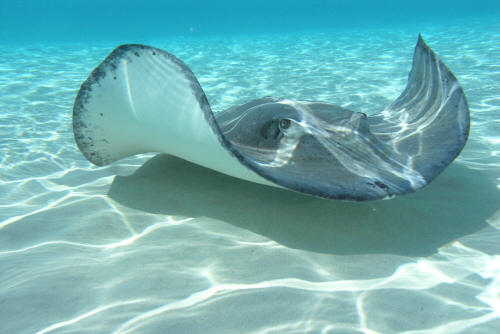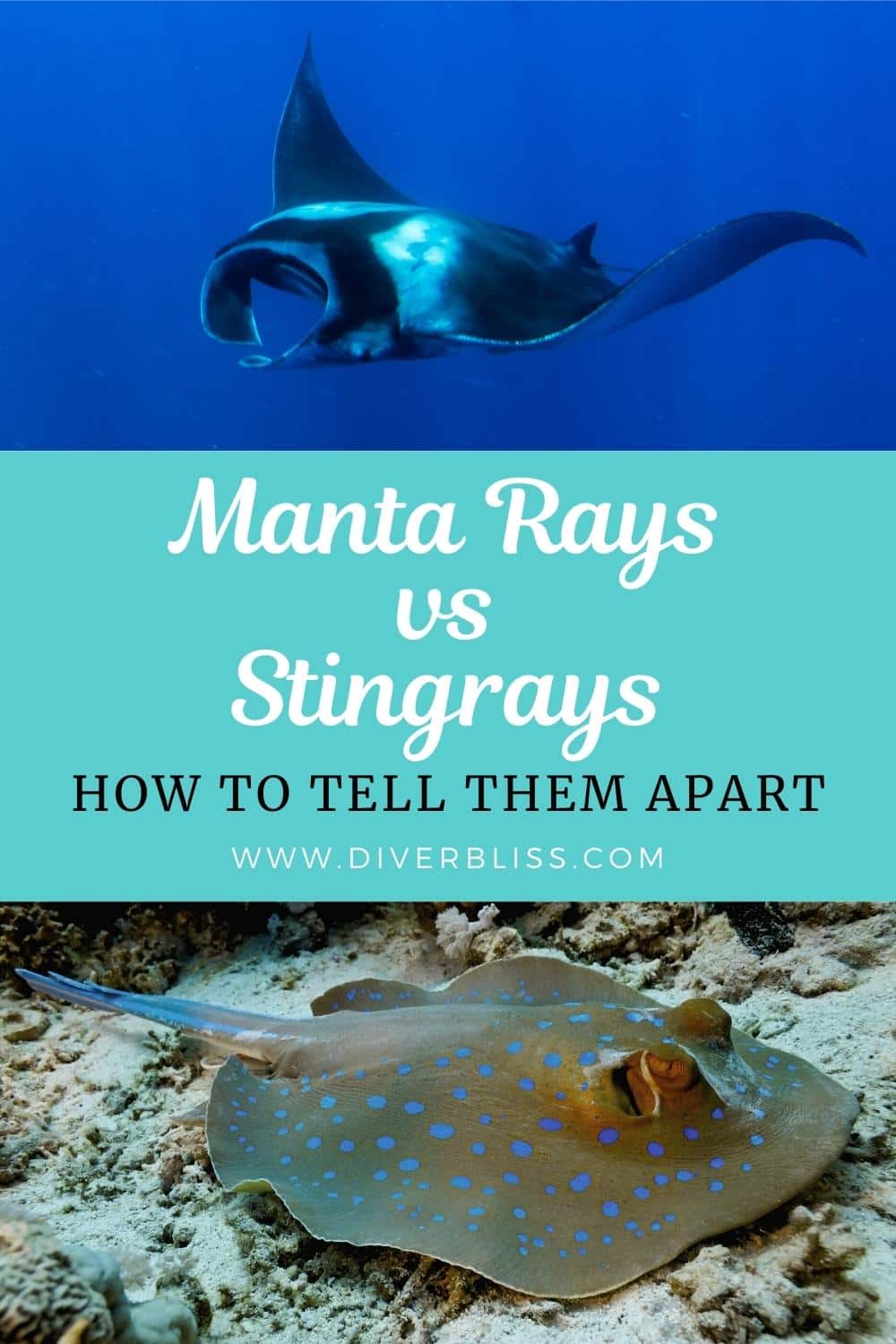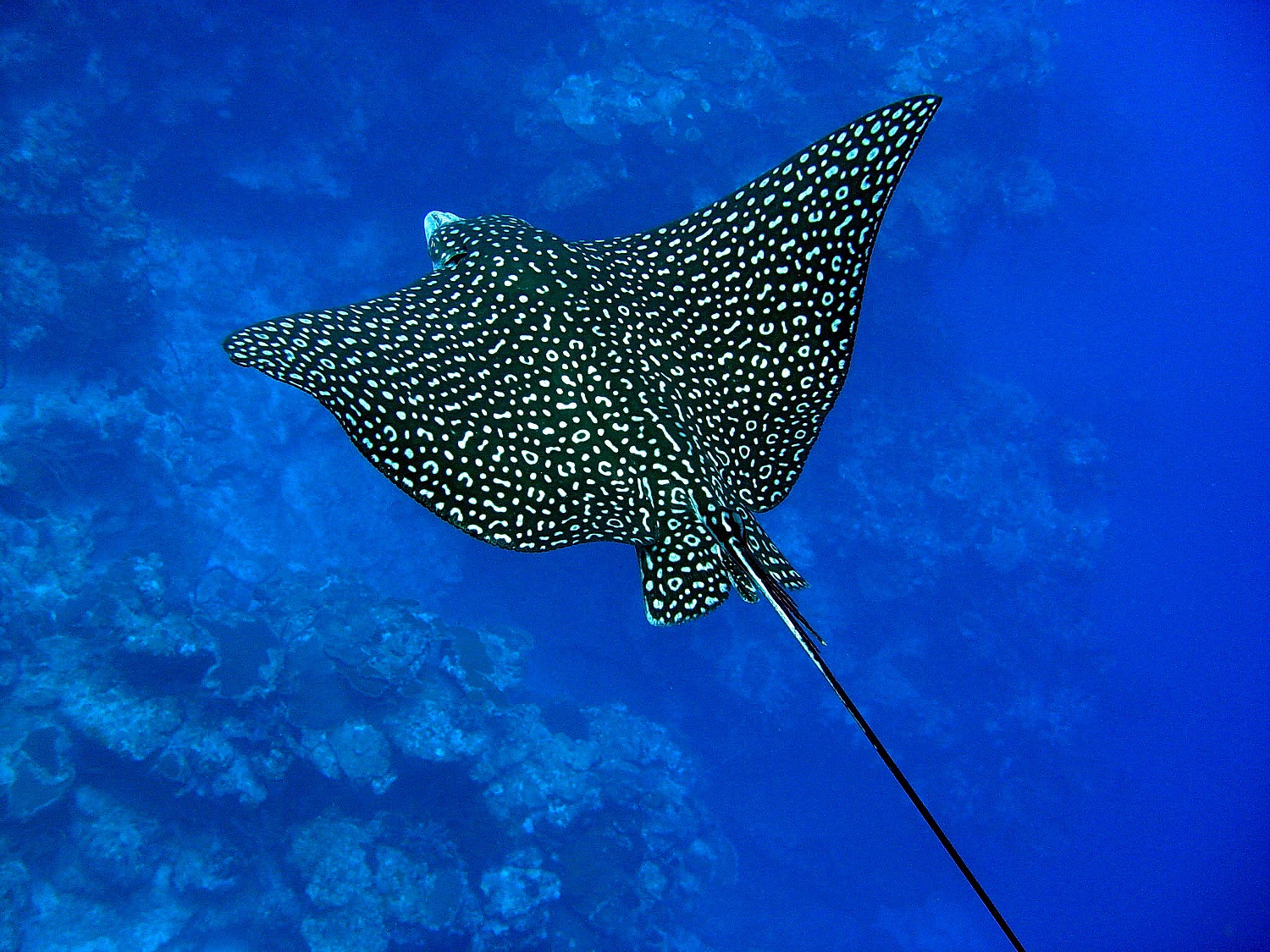
Yellow stingrays mostly feast on small crustaceans and mollusks, however, they do have a venomous barbed tail to protect themselves from potential dangers. You can often find the yellow stingray in muddy or rocky areas, or even in grassy nooks as it likes to camouflage itself from larger, predatory fish. While the rays listed above can grow multiple metres or feet in length, the yellow stingray grows to about 0.36 metres (1.2 feet) in its adulthood. The yellow stingray is the most unique of the rays in Belize due to its sandy yellow colour and significantly smaller size.

While diving, you may be able to spot the southern stingray’s eyes peeking up from the sand as it watches for small creatures to catch for lunch. Have no fear though, just like all of the other creatures in Belize, the southern stingray is harmless when left appropriate space, and is usually hidden under the sandy layer at the bottom of the ocean floor. They’re recognizable by their rigid and textured spine and a barbed tail meant to protect themselves from predators and catch their own prey. Usually spanning around 1.5 meters (5 feet) in wingspan, although they’re smaller these rays can pack a punch. Found in warm waters like the Caribbean and Western Atlantic Ocean, the southern stingray is a bit smaller than the rays mentioned above. The most common type of all the rays that divers encounter in Belize is the Southern Stingray. Unlike the manta ray, eagle rays have plate-like teeth that help them to eat all kinds of small creatures like clams, oysters, and shrimp. Eagle rays love to swim in warm, shallow waters, preferably near coral reefs where they feel safe to eat and mate, but they aren’t shy about leaping from the water when the urge hits.

Divers can choose to visit Eagle Ray Wall to see these creatures for themselves as the dive spot is very close to Belize Dive Haven.Įagle rays look very similar to their manta ray cousins, however, you can easily spot the difference due to their shiny, polka-dotted backs. Eagle RaysĮagle rays are very common in Belize, so much so that one oceanic wall where they congregate has been named Eagle Ray Wall in honour of their presence. Unfortunately, the friendliness of the manta rays has caused them to become over-hunted by fishers in the Caribbean ocean, which is why it’s extra important to respect their space and allow them to live freely if you spot one while on your dive. You can spot manta rays lazily gliding through the water with their mouth open, taking in plankton as they float along. Manta rays soar through the water as if flying through the sky, and although they can seem a bit intimidating due to their size and long whip-like tail, manta rays are mostly very gentle and feed primarily on plankton.

Average manta rays are about 4.5 Metres (15 feet) in length and are easily spotted by their black backs and white bellies. Manta rays are common, large, and identifiable when swimming in Belize. With four unique types of rays in Belize, it’s common to come across one or two while you’re on your dive! Manta Rays Another beloved sea creature our guests love to photograph and swim along with are the rays. It’s no secret that divers come from everywhere to experience swimming through the beautiful coral reefs with sea turtles, sharks, and dolphins. Belize is home to some of the most beautiful sea creatures in the world.


 0 kommentar(er)
0 kommentar(er)
